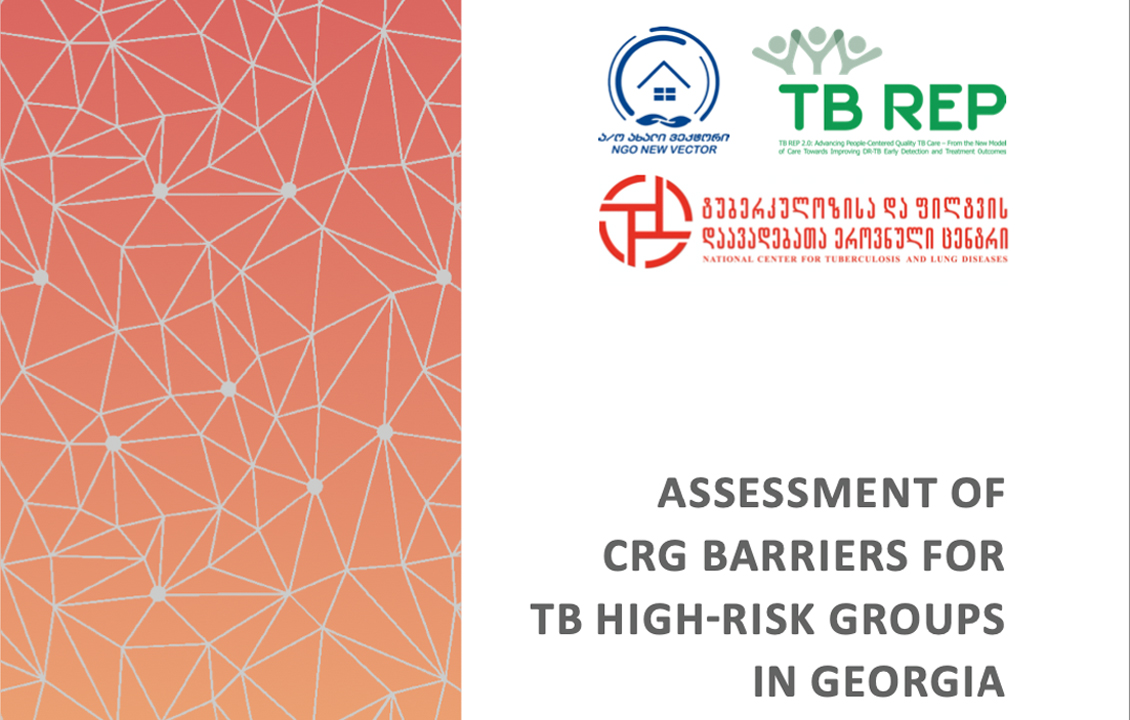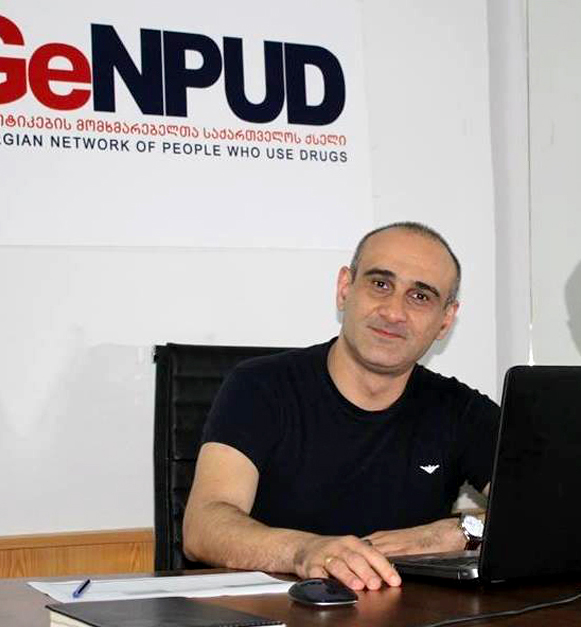
The non-governmental organization "New Vector" has presented the results of the communities, rights and gender (CRG) assessment. It was carried out with the support of the PAS Center, TBC Consult and Stop TB Partnership, based on analytical review and qualitative data collected through interviews and focus group discussions by the end of 2019. The study involved 145 respondents. All instruments are approved by the Bioethics Council of the National Center for Disease Control and Public Health of Georgia.
This is the first TB assessment of this kind carried out in Georgia. According to the results stigma was identified as a significant barrier at all stages of the TB control process hindering access to TB diagnosis and treatment. It is important to note that the double stigma related to TB diagnosis and belonging to the key group: IDUs or former prisoners is very common in the country. Tuberculosis is diagnosed more often in men than in women in Georgia.
All barriers identified during the assessment were classified according to the TB Journey which includes seven stages: from identifying the symptoms of TB to diagnosis, treatment, adherence support and follow-up at the end of the treatment.
 Koka Labartkava, TB-REP 2.0 project manager in Georgia, “New Vector”: “Several key actions aimed at removing barriers were identified based on the results of the assessment. These include an awareness raising and gender equality campaign. We identified the needs of the target group population for receiving up-to-date information on where to get high-quality medical examination and ways to determine the first symptoms of the disease and we intend to resolve this issue. At the same time this task was classified as high priority. It includes the creation and use of special diagnostic tools for family doctors and referral of patients to tuberculosis treatment centers."
Koka Labartkava, TB-REP 2.0 project manager in Georgia, “New Vector”: “Several key actions aimed at removing barriers were identified based on the results of the assessment. These include an awareness raising and gender equality campaign. We identified the needs of the target group population for receiving up-to-date information on where to get high-quality medical examination and ways to determine the first symptoms of the disease and we intend to resolve this issue. At the same time this task was classified as high priority. It includes the creation and use of special diagnostic tools for family doctors and referral of patients to tuberculosis treatment centers."
A special focus within the assessment was directed towards representatives of 3 key populations, which were identified as priorities by a wide range of stakeholders at the outset:
People in these groups were identified as most at risk for TB. The barriers faced by these groups have been further explored.
«We will focus on the needs of communities: drug users / LGBTIQ community, said Koka Labartkava. To this end, we have planned to conduct trainings with the help of civil society organizations working with high-risk groups in the context of TB: both for beneficiaries and for employees. We will advocate for providing these groups with access to services through a single window. We are initiating stronger collaboration between government systems and civil society organizations to improve health diagnosis.”
The assessment focused on identifying barriers related to gender, stigma and human rights. The most important obstacles are listed below.
Gender. The interviews showed that women are more afraid of TB and their TB awareness is lower, while TB is diagnosed more often in men. They may postpone treatment due to family responsibilities, financial difficulties, especially those in rural areas, or lack of support in childcare. Women are less likely than men to receive support from the family members. However, after treatment, women have better outcomes, including adherence, than men. The reason men postpone diagnosis and treatment was due to the fear of losing their paid job. LGBTQI people said they feared ill-treatment by medical personnel.
Stigma is a major obstacle at all stages of TB control, preventing access to TB diagnosis and treatment across the gender spectrum. It affects key populations and people with TB who do not belong to any specific key population. The assessment showed that stigma and fear of discrimination prevented some respondents from informing their families and employers that they had tuberculosis. Receiving anti-tuberculosis drugs in healthcare facilities or delivering anti-tuberculosis drugs within DOT (Directly observed therapy) by nurses were not always suitable options for TB patients who feared that their status would be publicly disclosed.
Human rights. Non-tuberculosis medical institutions carry out paid tests before referring a person to free tuberculosis treatment. When a socially vulnerable person receives social benefits for treatment, the state considers this as additional income, which can lead to the cancellation of social assistance.
Key population groups: According to some respondents, there is often double stigma caused by TB diagnosis and belonging to a key group. People who use drugs reported fearing prosecution as an obstacle to visiting health facilities. The remoteness of health facilities was seen as a significant obstacle.
The assessment was carried out as part of the TB-REP 2.0 regional project coordinated by the PAS Center, funded by the Global Fund to Fight AIDS, Tuberculosis and Malaria. The assessment was undertaken with a multistakeholder engagement to prioritize the assessment and further to validate the results and develop an action plan to remove the barriers.